The magnolia trees are stunning in the early springtime, with their spectacular showy blossoms that come out weeks before their leaves grow. All magnolias have thick, waxy blossoms and simple leaves. Hundreds of wild Magnolia species and thousands of hybrids and cultivars exist.
On the grounds of the Gateway Arch, at least six different kinds of magnolias are now showing their colors. The easiest to identify is Southern Magnolia (Magnolia grandiflora), which is native to the southeastern United States. Southern magnolia is the only evergreen magnolia planted here. Since our other magnolias lose their leaves in the fall, you can be confident that any magnolia with both leaves and flowers in the early spring is a southern. One beautiful specimen is planted near the Old Cathedral.
Most magnolia trees near the entrance are pink. These trees are all hybrids. Our pink magnolias are either Saucer magnolias (a hybrid of M. liliflora and M. denudate), Jane magnolias (a hybrid of M. liliflora and M. stellata), or Galaxy Magnolias (a hybrid of M. liliflora and M. sprengeri). Jane magnolia flowers are brighter and pinker than Saucer magnolias, and Galaxy magnolias are purplish. They are similar enough that telling them apart can be a challenge.
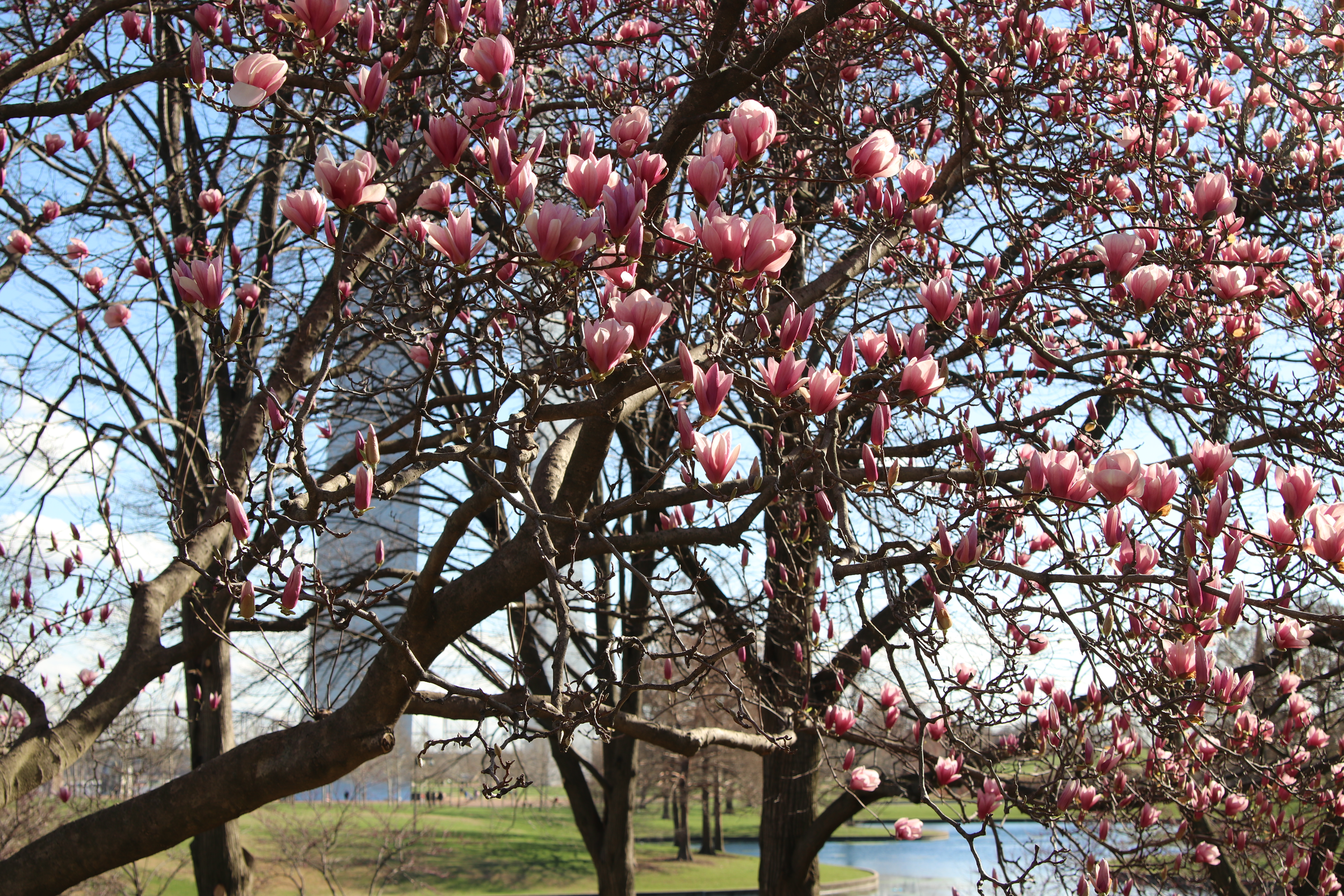
The tree pictured above is a Saucer magnolia. It is on the north end of the north pond and is the largest magnolia tree on the grounds. Photo by D. Reissing, NPS
There are also several white-blossomed magnolias throughout the park. Some of these trees are Star Magnolias (Magnolia stellata). This plant, endangered in its native Japan, is widely cultivated in North America and Europe. We also have hybrids that are crosses of Star Magnolia and a different Japanese magnolia species called Kobus magnolia. These hybrids are called Loebner Merrill Magnolias, and they were developed in the 1950s at Harvard University.
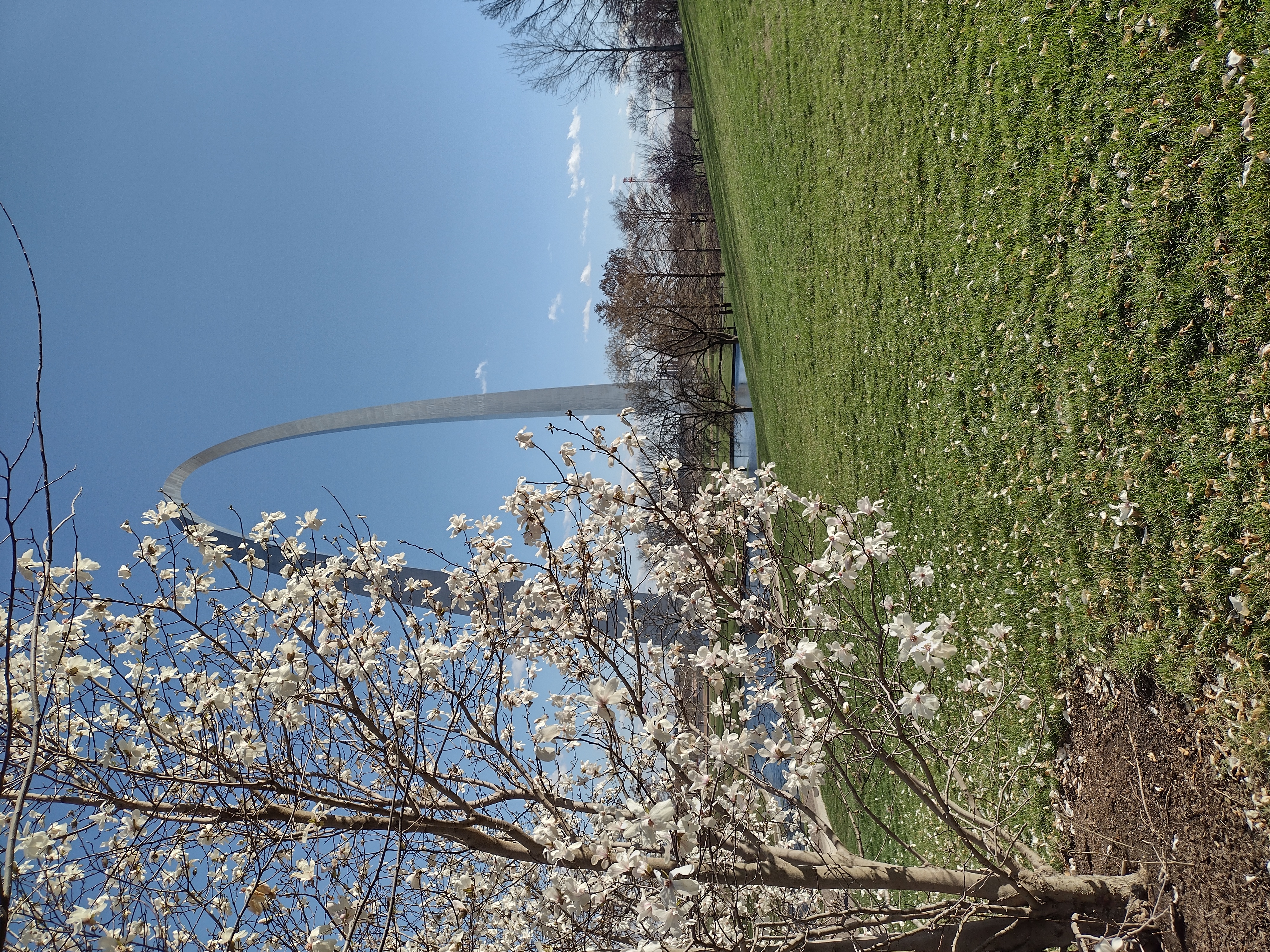
This Loebner Merrill magnolia retains the huge star-shaped blossoms of its parent, Star Magnolia, but is taller and hardier. Photo by D. Reissing, NPS
Moving away from Magnolias: in the North Gateway Explorer’s Garden, Blue phlox (aka Phlox divaricata or Wild Sweet William) is blooming abundantly. This species is native to basically all of North America east of the Rockies, from Florida to Quebec. It will be blooming for nearly a month and is a favorite of butterflies, moths, bumblebees and hummingbirds. It’s a favorite of humans, too, with its gorgeous pastel blooms.

Blue phlox thrives in partial shade, so these plants growing under the cottonwood trees close to the Laclede’s Landing metrolink station are the biggest and showiest. Photo by B. Michel, NPS
There are also several beautiful varieties of daffodils growing in the North Gateway Explorer’s Garden. Although this garden normally prioritizes native species, daffodils are not native to North America. (The ancestors of today’s daffodils came from the Mediterranean, but modern daffodils barely resemble the wild ones anymore, since humans have selectively bred them for color and shape for thousands of years). Although daffodils are non-native, they are not invasive and generally do not spread or displace native species. They bloom before most springtime natives and provide nectar to spring’s early insects.
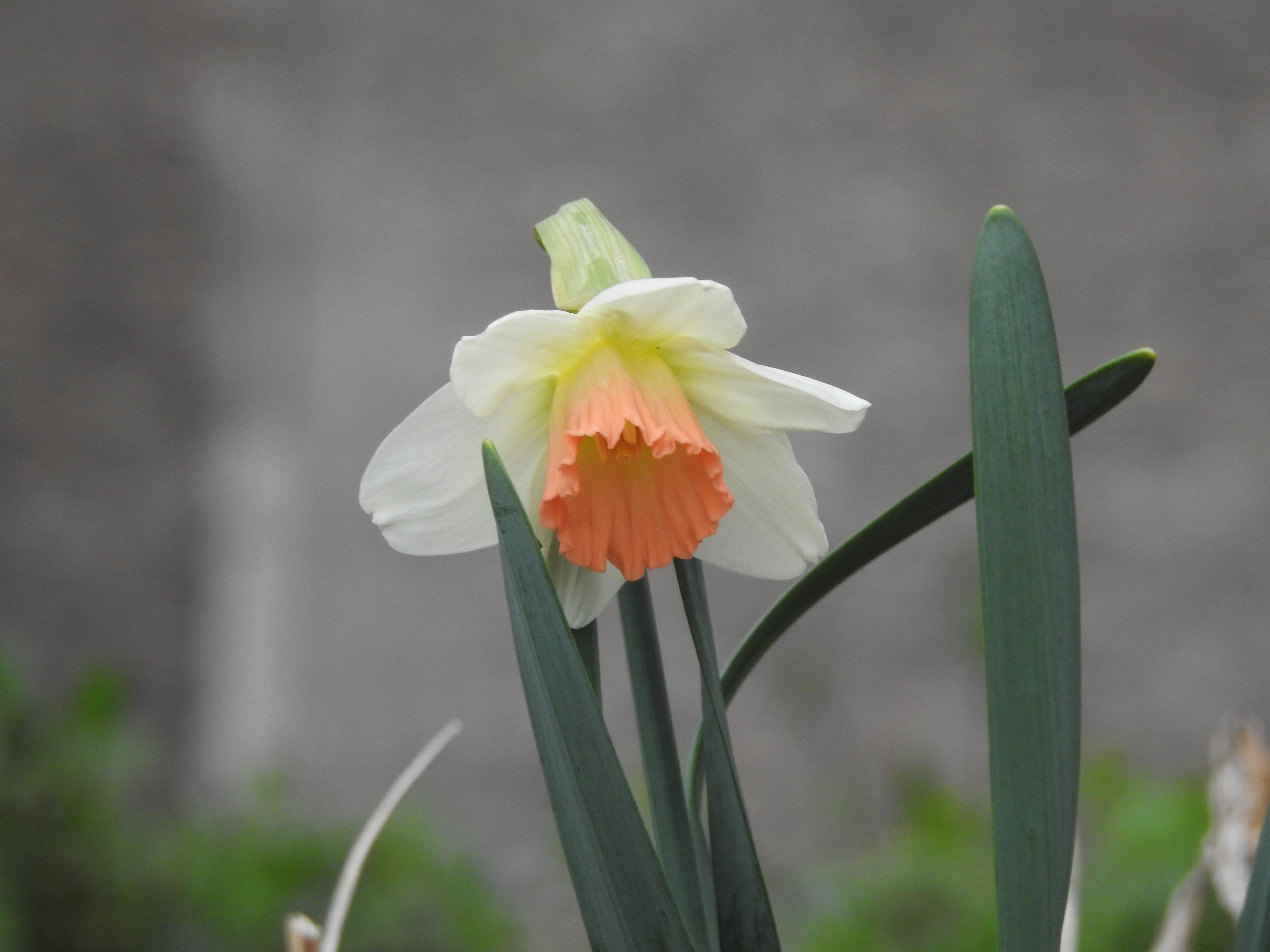
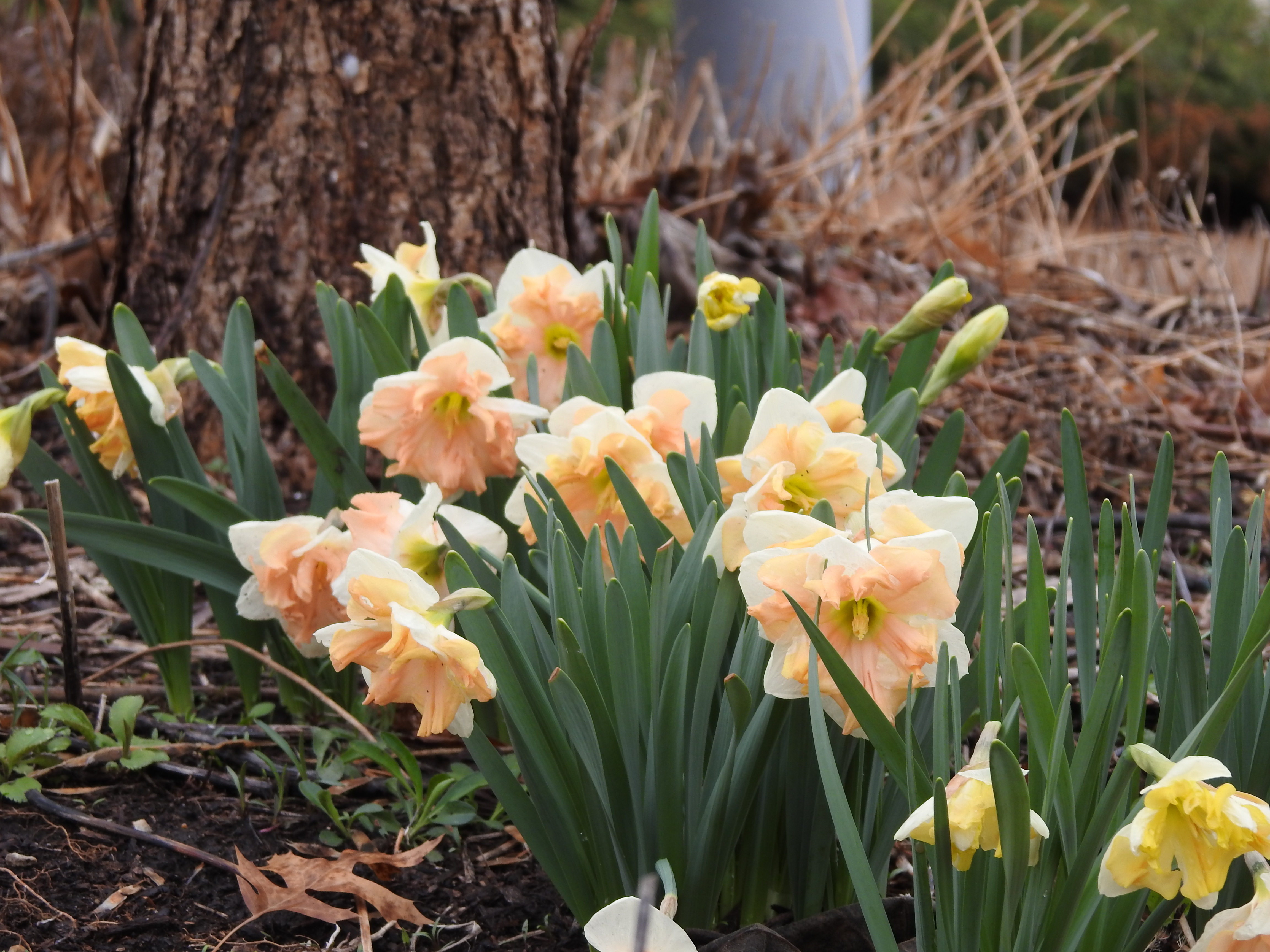
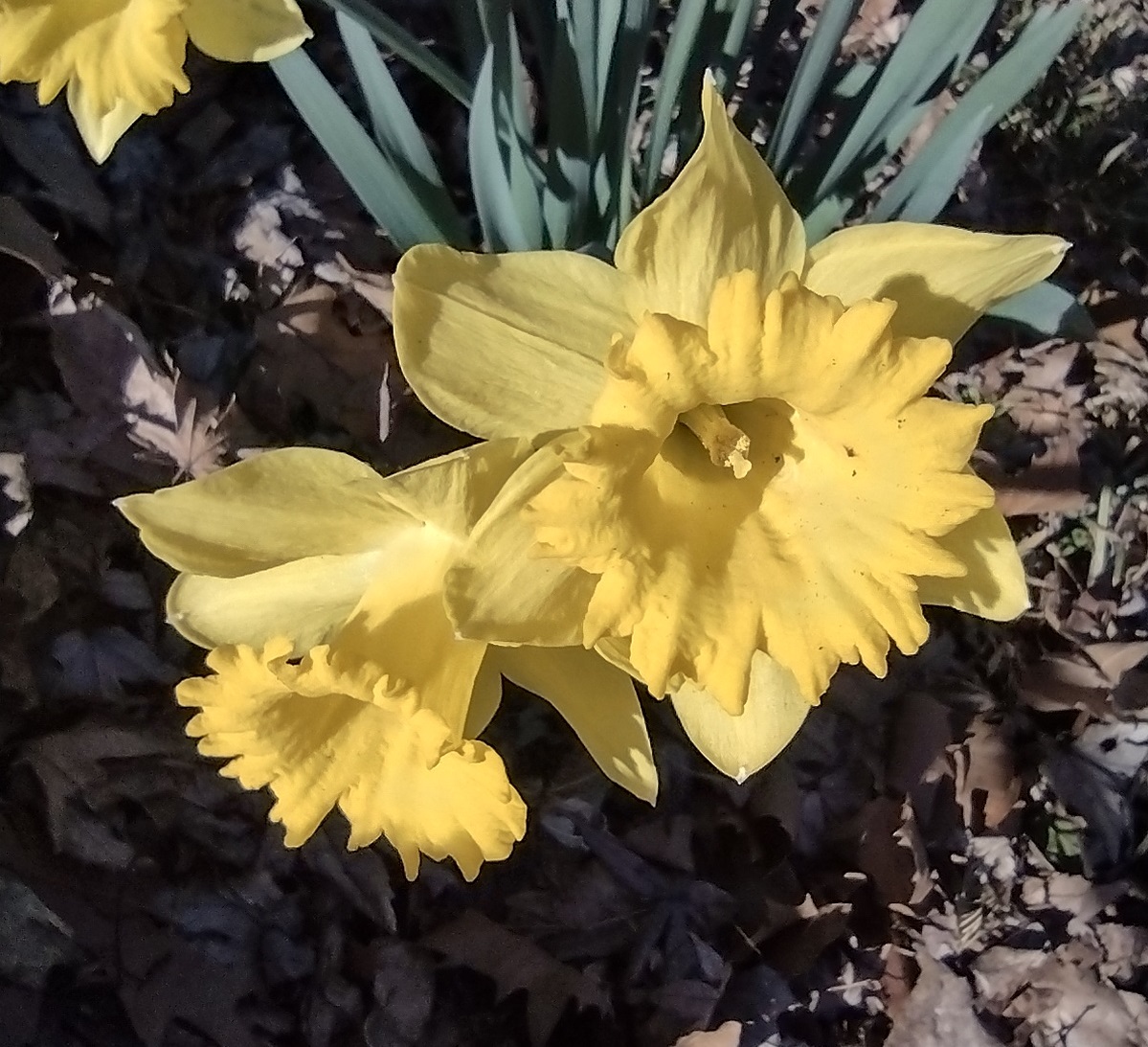
These early spring daffodils will die back by the time the native flowers emerge, so they don't compete with native pollinators for resources. Photos by D. Reissing, NPS
